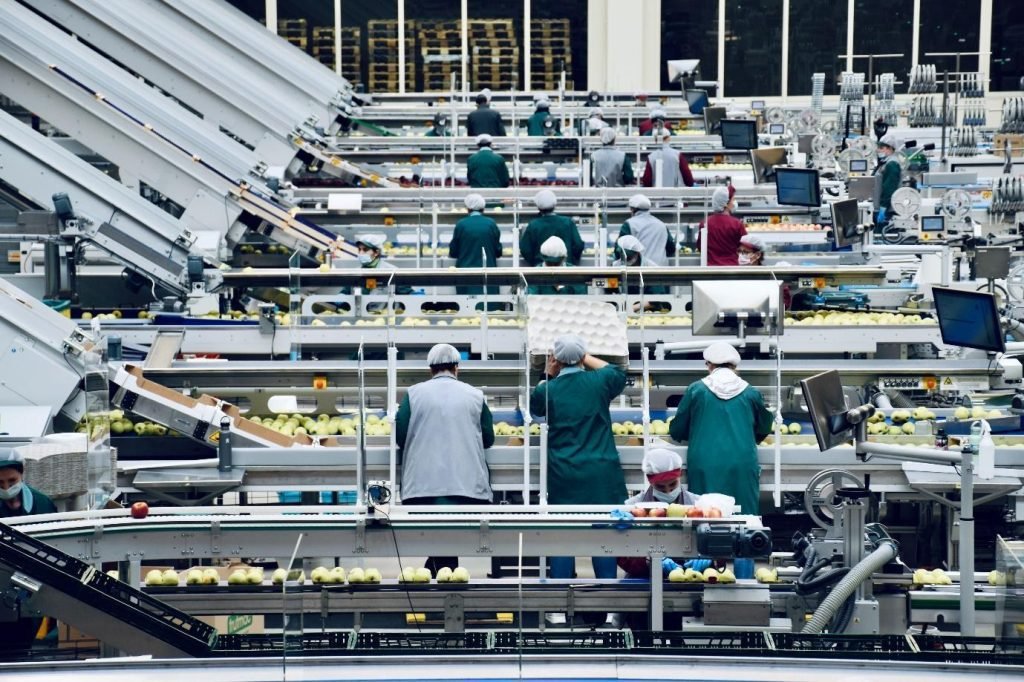Last Updated on September 15, 2023 by
Belt conveyors and roller conveyors are the two most prevalent types of conveyors. Both conveyors have other variations, such as powered or gravity rollers and conventional or plastic modular belts, but they are the most frequent forms of conveyor accessible.
This article will explain the difference between Belt and Roller Conveyors and the factors to consider when choosing a conveyor.
Table of Contents
What is a Belt Conveyor?

Belt conveyors are powered by motors and run over slider beds or rollers. It directly touches the belt and provides greater control and product support, particularly on incline/decline processes.
What is a Roller Conveyor?
A roller conveyor is a frame supported by several rollers on which items can be conveyed by gravity, manually, or automatically.
Roller conveyors can be utilized in a variety of ways and adjusted for various tasks, including the transportation of crates, pallets, trays, and slave boards.
In addition to various auxiliary devices, a roller conveyor system layout can support bends and turntables.
Roller conveyors are generally used in locations like industrial plants or warehouses because of the nature of transporting products.
Mild steel, galvanized steel, plastic, and stainless steel are all materials that you can use for roller conveyors.
Difference between Belt Conveyors and Roller Conveyors
Both standard belt and roller conveyors are helpful for cast/tote handling and accumulation (with limited capability on traditional belts) and have minimal maintenance. Also, both systems can incorporate bends, integrate with merges, and have standby modes, but one system has characteristics that the other does not.
Standard belt conveyors are better suited to small or irregular items, inclines, and declines than roller conveyors. Still, only roller conveyors can be easily modified or added to integrate with diverts and can be used for sortation.
When to use a belt conveyor
Because the belt is a flat surface, the size of the product is unimportant; belt conveyors may quickly transfer little things or loose material.
One thing to remember is that sharp or hefty items may cause belt damage.
Massive objects may also cause problems for a regular belt conveyor, and while heavy-duty belts are available, roller conveyors are frequently more cost-effective for basic product movement.
Belt conveyors are widely found in agriculture, mining, supermarkets, greenhouses, factories, warehouses, and e-commerce fulfillment centers.
When to use a roller conveyor
Items that are not stiff can become trapped between the rollers. Roller conveyors are, therefore, unsuited for loose items, bags, and packs.
The pieces must also be large enough to sit across multiple rollers, or the product will not move as intended. Roller conveyor systems are better suited for product accumulation, particularly zero pressure accumulation, which allows items to collect without colliding. This can help prevent product damage, especially with more delicate objects like glass bottles.
Things to Consider When Choosing a Belt Conveyor System
1. Products to Transfer
The critical element to consider when selecting a belt conveyor is the product to be transferred. This is primarily because the belt’s material and surface are chosen based on the items to be conveyed. It is making this point the deciding factor in selecting the material and kind of belt surface compatible with your product.
The product you load onto the conveyor significantly impacts the type and parameters of your conveyor. There are numerous specifications to consider if you want to maximize the capacity of your production line by employing a conveyor.
1. Size of the Products
In case you forgot, product dimensions are length x width x height. This product dimension determines the width of your belt—the wider the product, the wider the belt that is required.
This should also be considered when installing features such as side guides, which ensure products stay on top of the conveyor without tumbling sideways.
2. Total Weight on the Conveyor
This is a more detailed discussion of the belt conveyor. The entire weight placed on top of the belt conveyor dictates the material of the body, ladder, and legs. The stronger the material used for the ladder and conveyor legs, the heavier it becomes on top of the conveyor.
Aluminum is suitable for medium-light duty applications. A steel-based conveyor should be used for heavy-duty jobs.
Things to Consider When Choosing a Roller Conveyor System
Product Transfer Requirements
One of its most crucial components is transferring products to and from a conveyor system. Product transfers come in various designs, including powered transfers, dead plates, side-to-side transfers, and gravity rollers.
For example, transferring a 5-inch-diameter roll of tape from one plastic chain conveyor to another. Due to the product’s small footprint, a powered transfer may be required.
1. Environmental Conditions
Environmental factors are frequently overlooked or never investigated when choosing a conveyor system. It is crucial to comprehend the characteristics of the environment where your conveyor will be installed. For instance, if you work with metal parts, cutting oil residue or metal machining shavings could enter your conveyor and cause problems.
2. Washdown Requirements
The choice of conveyor can significantly impact both price and conveyor construction depending on the washdown requirements. Employing mild steel or aluminum bolted construction conveyors in most warehouse environments is adequate since washdown-rated conveyors are not usually needed. However, numerous applications in the food, dairy, and pharmaceutical industries necessitate using stainless steel conveyors at various levels of washdown grade.
Bottomline
The desired application, product, and manufacturing architecture will influence your conveyor needs. Significantly, conveyor systems frequently combine belts and rollers at various locations to achieve optimum product control and the most efficient flow.
Apart from this, if you are interested to know about Quick Fit Seamless Conveyor Belt Lacing Mechanical Joint then visit our Business category.